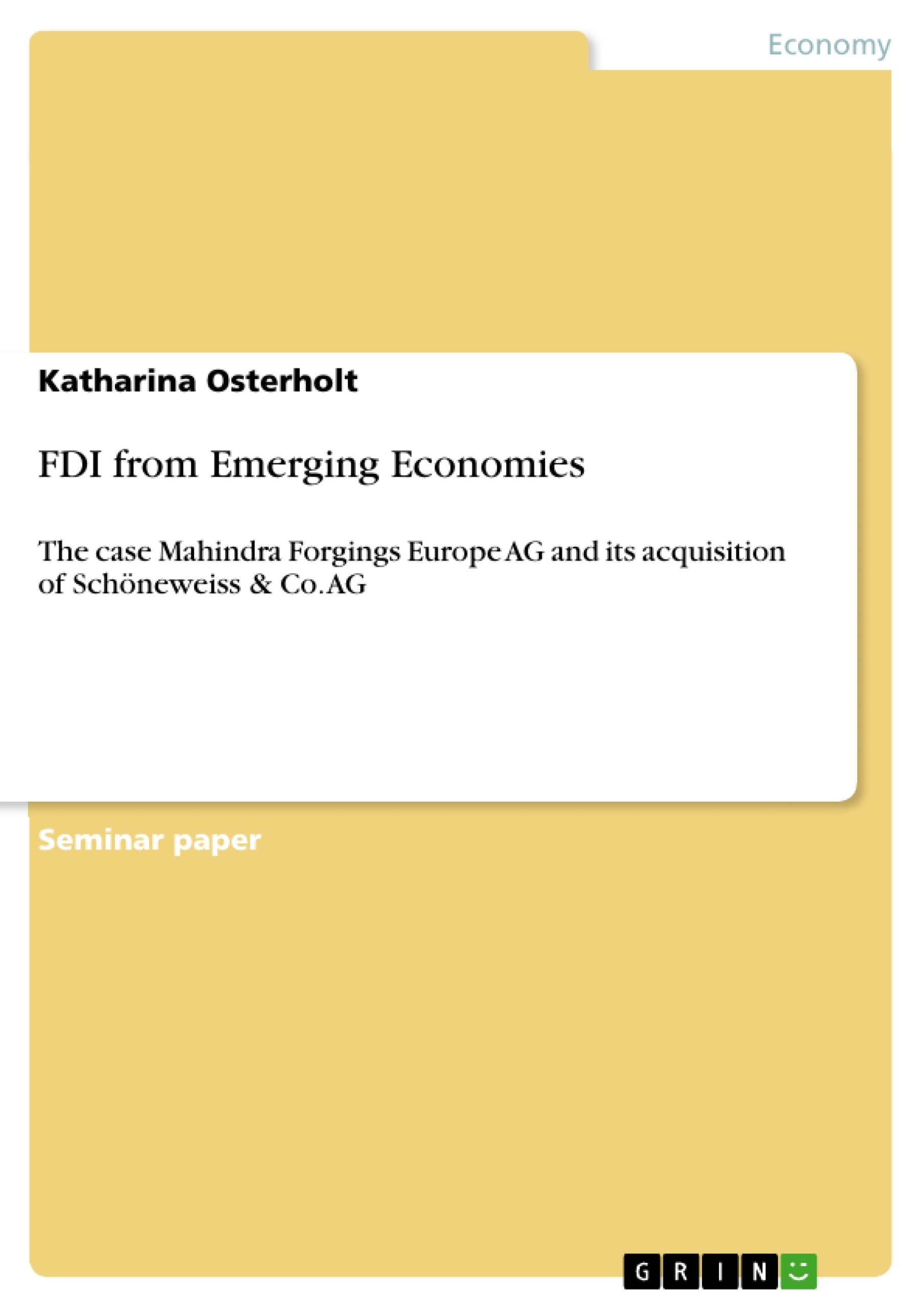FDI from emerging economies has become more and more important in the recent years, it increased from $149 billion in 1990 to up to $1274 billion in 2005. As traditional FDI theories are more focussing on downhill- investments, namely investments from developed countries to developing ones, the uphill investment perspective becomes more interesting.
This term paper looks into Indian FDI invested into the EU, to exemplify this the paper uses the case study of the Indian company Mahindra and Mahindra acquiring the German company Schöneweiss in 2007.
It seeks to answer the question why an Indian company like Mahindra and Mahindra is investing into Europe, trying to find specific reasons for it by analysing empirical data. It is not only taken the perspective by Mahindra in this term paper but also the perspective by Schöneweiss, asking which were their reasons to agree to the acquisition.
Inhaltsverzeichnis (Table of Contents)
- Introduction
- The Case Mahindra and Mahindra acquiring Schöneweiss
- Background knowledge
- Schöneweiss & Co. GmbH
- Mahindra and Mahindra
- Theory
- FDI
- Reasons for FDI
- FDI and emerging economies
- FDI and India
- FDI in the EU from Asia
- Methodology
- Analysis
- Conclusion
Zielsetzung und Themenschwerpunkte (Objectives and Key Themes)
This term paper examines the phenomenon of "uphill" investments, specifically focusing on Indian FDI invested into the EU. It uses the case study of Mahindra and Mahindra acquiring the German company Schöneweiss in 2007 to analyze the reasons behind this investment. The paper seeks to understand why an Indian company like Mahindra and Mahindra would choose to invest in Europe, exploring both the perspective of Mahindra and Schöneweiss. The analysis aims to assess the success of this acquisition, looking at factors such as price pressure, investment costs, expertise acquisition, customer relationships, and brand recognition.
- The increasing importance of FDI from emerging economies
- Reasons for "uphill" investments from emerging economies into developed countries
- The case study of Mahindra and Mahindra acquiring Schöneweiss & Co. GmbH
- Analysis of the success of the acquisition
- The role of expertise acquisition, customer relationships, and brand recognition in FDI
Zusammenfassung der Kapitel (Chapter Summaries)
The introduction provides a brief overview of the increasing trend of FDI from emerging economies and sets the context for the case study. The background knowledge section introduces the companies involved, Schöneweiss & Co. GmbH and Mahindra and Mahindra, providing their historical context and key characteristics. The theory section explores FDI, examining traditional FDI theories and specific reasons for FDI from emerging economies. It further focuses on FDI from emerging economies, specifically India, and FDI in the EU from Asia. The methodology section outlines the research approach used in the paper, while the analysis section applies the theoretical framework to empirical data gathered from various sources. The paper aims to provide a comprehensive analysis of the case study, drawing conclusions based on the available data.
Schlüsselwörter (Keywords)
The primary keywords and focus topics of the paper are FDI, emerging economies, uphill investment, Mahindra and Mahindra, Schöneweiss & Co. GmbH, acquisition, strategic alliances, expertise acquisition, customer relationships, brand recognition, and risk diversification. The paper explores these key themes and concepts to shed light on the phenomenon of FDI from emerging economies and the specific case of Mahindra and Mahindra's investment in Europe.
- Quote paper
- Katharina Osterholt (Author), 2011, FDI from Emerging Economies, Munich, GRIN Verlag, https://www.grin.com/document/193725



